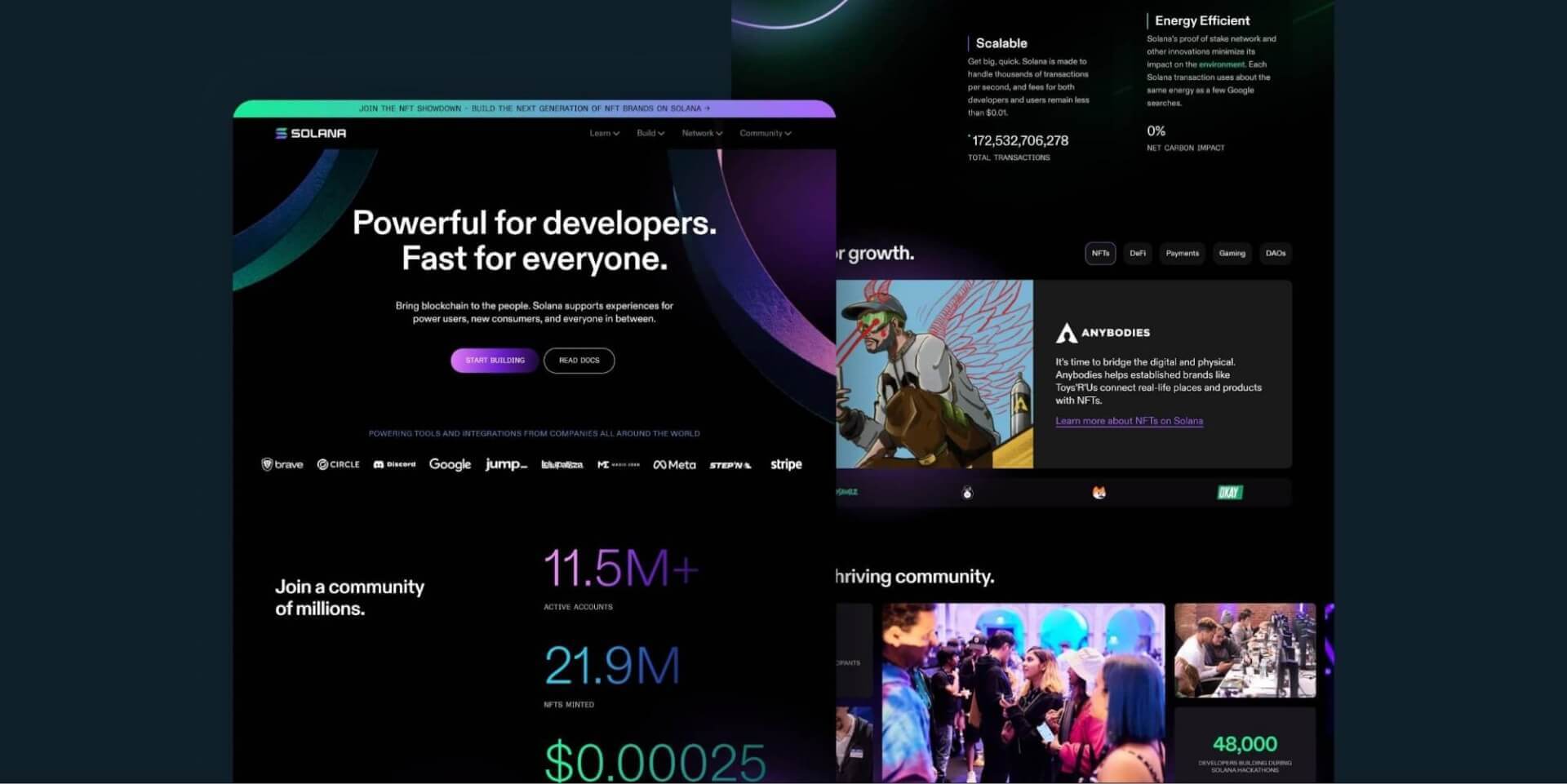How to Effectively Combine Looks and Capability in Web Layout
When making a web site, you require to strike a balance in between visual appeals and performance. It's not just regarding looking good; your layout must also offer a function and guide individuals successfully. By concentrating on simpleness and intuitive navigation, you can produce an interesting experience. However what elements really enhance functionality while maintaining aesthetic charm? Allow's explore the vital principles that can lead to a harmonious mix of appeal and function.
Understanding the Importance of Aesthetic Appeals and Performance
Understanding the equilibrium in between aesthetics and functionality is important for developing an efficient user experience when you develop a website. An aesthetically appealing site grabs interest, however it's the functionality that maintains users involved. Site visitors will swiftly shed interest and leave.Consider your target audience and what draws them in if your site looks great but is difficult to navigate. You want to create a design that shows your brand name while making certain ease of usage. Structured designs, user-friendly navigation, and clear calls to action can improve both appearances and capability.

Principles of Reliable Website Design
To develop an effective website design, you need to abide by several key concepts that boost both user experience and visual allure. Focus on simplicity; a tidy design assists customers navigate easily. Make use of a consistent color design and typography to maintain comprehensibility throughout your site. This cultivates familiarity and trust.Next, guarantee your design is receptive. Individuals accessibility websites on numerous tools, so your style must adapt perfectly. Take note of visual pecking order; highlight crucial aspects with positioning, color, or dimension to direct individuals' focus.Finally, incorporate sufficient white room. It prevents mess and makes content extra digestible. Remember, effective website design equilibriums visual appeals and performance, so every style selection need to offer a function. By adhering to these concepts, you'll develop a website that's not just visually attractive yet likewise straightforward, ultimately maintaining visitors engaged and motivating them to return.
Focusing On User Experience
When prioritizing individual experience, you'll wish to begin by comprehending what your customers truly need. Simplifying navigating style can make a substantial difference in just how conveniently they locate what they're searching for. Enhancing visual pecking order helps assist their focus to the most vital elements on your website.
Recognizing Individual Demands
Recognizing user needs is crucial for producing an interesting web experience that keeps site visitors coming back. To accomplish this, you should determine the goals and preferences of your target market. Begin by performing user research, like studies or meetings, to collect insights on what customers worth most. When engaging with similar websites, pay interest to their discomfort points and difficulties. This info permits you to customize your design, making sure functionality lines up with user expectations. In addition, think about producing customer personas that stand for different sectors of your audience, aiding you picture their needs during the style process. When you prioritize comprehending customer requirements, you produce a site that not only looks fantastic however additionally delivers a seamless, enjoyable experience that promotes commitment.
Simplifying Navigation Design

Enhancing Aesthetic Hierarchy
A solid visual hierarchy is important in leading customers through your web site and ensuring they engage with vital material. To attain this, utilize dimension, color, and spacing strategically. Make vital elements like headings bigger and bolder than body text, attracting interest immediately. Use contrasting shades to highlight contact us to activity, encouraging clicks. Additionally, use ample white space to separate sections, making content absorbable and inviting.Consider the circulation of info; set up components logically, leading users' eyes from one indicate the next. Use visual signs, like lines or arrowheads, to route focus. By focusing on aesthetic hierarchy, you boost user experience and increase the possibility of conversions, ensuring your site is both visually pleasing and functionally effective.
Color Concept and Its Influence on Use
While picking the ideal shades for your internet site might appear like a small detail, it considerably affects usability and individual experience. Shade affects exactly how customers perceive info and can hinder or boost navigation. For circumstances, contrasting shades can aid essential aspects attract attention, making it much easier for site visitors to discover what they need.Additionally, think about the psychology of shades: blue frequently influences trust, while red creates urgency. Knowing your target market can assist your shade choices, guaranteeing they resonate well.Moreover, consistent color plans aid develop brand identity, making your web site extra remarkable. Nonetheless, beware-- a lot of colors can overwhelm users. Adhere to a restricted palette that enhances your material and maintains clarity.Incorporating accessibility is additionally necessary; verify your shade mixes get along for those with aesthetic impairments. By attentively applying shade concept, you'll boost use and develop a more interesting user experience.
Typography: Balancing Style and Readability
Shade options established the phase for your web site, but typography plays a similarly vital role in improving customer experience. You want your message to communicate plainly while also showing your brand name's character. Beginning by choosing font styles that are not just attractive however also readable. Sans-serif typefaces typically function well for digital screens, as they're simpler to read at different sizes.Maintain a hierarchy by utilizing various font sizes and weights; this guides individuals through your web content effortlessly. Take into consideration line spacing and letter spacing; as well limited can frustrate readers, while also loosened can interfere with the flow. Limitation your font options to 2 or three to maintain the layout cohesive.Finally, always examine your typography across different devices and web browsers. What looks excellent on one display might not on one more. Stabilizing style with readability guarantees that your message reverberates, maintaining your audience engaged and notified.
Responsive Layout: Making Appearances Service All Devices
To guarantee your site looks great on any type of gadget, you'll need to accept receptive layout principles. This approach assurances your website adapts to numerous screen sizes, offering an excellent individual experience. Beginning by using fluid grids and flexible pictures that scale effortlessly. Rather than dealt with measurements, decide for percents and family member systems, enabling your layout to change dynamically.Next, apply media queries in your CSS. These let you apply different styles based on device attributes, like screen width. By doing this, you can keep visual allure while assuring functionality.Don' t ignore touch targets; make sure switches and web links are very easy to tap on smaller displays. Prioritize important content, so individuals can quickly navigate your site despite their gadget. By focusing on these components, you'll produce an engaging, aesthetically appealing experience that satisfies the requirements of all individuals, whether they're on a tablet computer, mobile phone, or desktop .
Performing Functionality Testing for Continual Enhancement
To enhance your internet design, you need to set clear functionality goals that line up with user needs. By performing customer examinations, you can collect important responses on exactly how actual people connect with your site. Examining these results will aid you make informed enhancements and create a much more reliable user experience.
Specifying Use Goals
While appearances can draw individuals in, specifying usability objectives is important for ensuring their experience continues to be seamless and rewarding. Start by identifying what you desire users to accomplish on your website (website design london Ontario). Consider their behaviors, requirements, and jobs. Are they trying to find information, buying, or registering for an e-newsletter? Develop clear standards to measure success, like task conclusion prices or time on task. Focus on intuitive navigation, easily accessible content, and responsive style to enhance use. On a regular basis revisit these goals as individual assumptions progress. By specifying functionality objectives, you develop a structure for assessing and improving your website's efficiency. This focus on usability not only enhances user contentment yet additionally reinforces the overall efficiency of your style
Carrying Out Individual Tests
Carrying out user tests is vital for fine-tuning your web site and guaranteeing it satisfies your target market's requirements. Start by identifying your target users and creating an examination strategy that details your goals. Utilize a mix of qualitative and measurable methods, such as surveys, interviews, and task-based observations, to gather extensive feedback. Welcome individuals to browse your site while you observe their interactions and keep in mind any kind of difficulties they experience. Encourage open dialogue to record their ideas and feelings about the layout and capability. Maintain sessions short and focused, guaranteeing you cover key locations without frustrating individuals. Lastly, see to it to document all searchings for, as this details will certainly be vital for making educated design choices that improve both appearances and functionality.
Analyzing Test Results
Just how can you successfully analyze the outcomes of your usability examinations to drive continuous renovation? Start by classifying feedback right into common styles. Look for patterns in customer behavior that highlight discomfort points or areas for improvement. Use measurable information, like task conclusion rates and time on job, to measure functionality fairly. Don't neglect to think about qualitative understandings from user remarks; they frequently here disclose underlying issues that numbers can't reveal. Focus on the most impactful searchings for and create actionable things for your design team. Bear in mind, it has to do with repeating-- apply modifications, after that examination again. This cycle of screening, assessing, and refining helps you balance aesthetics and performance, guaranteeing your website satisfies individual demands effectively while preserving aesthetic appeal.
Often Asked Questions
How Do I Select the Right Shade Scheme for My Website?
To select the ideal shade scheme for your internet site, consider your brand name's personality, target audience, and psychological impact (website design london Ontario). Use color psychology, create harmony, and guarantee readability. Test combinations to see what reverberates ideal with site visitors
What Devices Can Aid With Website Design Aesthetic Appeals and Capability?
You can make use of tools like Adobe XD, Figma, and Map out to boost your internet layout's aesthetics and functionality. These platforms supply instinctive user interfaces, cooperation attributes, and pre-made layouts to enhance your innovative process and improve your designs.
Just How Can I Include Animations Without Jeopardizing Performance?
To incorporate animations without endangering capability, prioritize subtle effects that enhance customer experience. Usage CSS animations for smoother interactions, warranty quick load times, and examination on different devices to keep efficiency while adding aesthetic appeal.
What Prevail Blunders to Prevent in Website Design Aesthetics?
When making, prevent cluttered designs, poor shade options, and irregular font styles. Don't ignore mobile responsiveness, as it can alienate users. Confirm your style aligns with your brand, creating a smooth experience that involves visitors properly.
Exactly how Usually Should I Update My Web site's Style for Optimal Appearances?
You must upgrade your website's style every 1-2 years to stay on top of patterns and keep suitable visual appeals. Regularly restoring visuals aids engage visitors and assurances your site continues to be easy to use and attractive. When you make a web site, comprehending the equilibrium between appearances and capability is vital for developing an effective user experience. To develop an efficient internet layout, you require to adhere to several crucial concepts that boost both user experience and visual appeal. Individuals accessibility internet sites on various tools, so your design ought to adapt flawlessly. When focusing on user experience, you'll want to start by recognizing what your users genuinely require. Begin by conducting user research, like meetings or studies, to collect understandings on what individuals worth most.